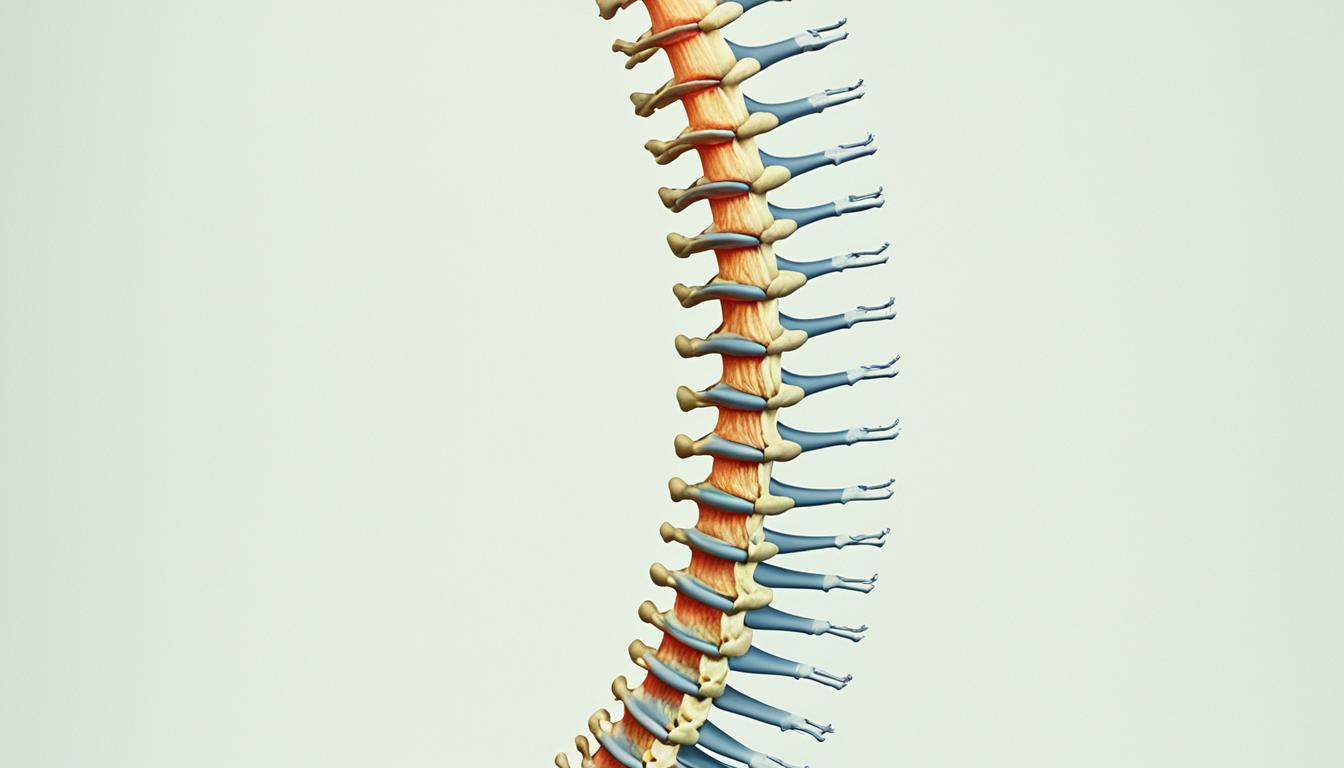Spinal curvature, known as scoliosis, kyphosis, or lordosis, means the spine is curved abnormally. This can cause a person to have a bad posture and other problems. There are different kinds of spinal curvatures, including those found in children, adults, and people with specific health conditions.
Symptoms can include shoulders that are different heights, a body that leans to one side, and changes in the skin where the spine is affected. Doctors usually find out if someone has this condition with X-Rays, CT scans, or MRIs. They measure the curve of the spine in degrees.
How a doctor treats spinal curvature depends on how severe it is, the patient’s age, and how quickly it’s getting worse. Mild cases might use a brace or physical therapy. Severe cases may need surgery. There are some new treatments like stem cell therapy and robotic spine surgery. They are showing good results in helping the spine and fixing the curve.
Key Takeaways:
- Spinal curvature is when the spine is curved abnormally, also known as scoliosis, kyphosis, or lordosis.
- Signs may include shoulders at different heights, a leaning body, and skin changes near the spine.
- Doctors often confirm their diagnosis with X-Rays, CT scans, or MRIs.
- Treatment depends on the curve’s severity, the patient’s age, and its rate of change.
- A brace or physical therapy can help mild cases, while surgery might be needed for severe ones.
Causes and Pathological Processes of Spinal Curvature
Spinal curvatures like scoliosis, kyphosis, and lordosis can happen for several reasons. These include genetic issues, injury, and bad posture. If not fixed, this can cause the spine to load unevenly. This leads to spinal deformity.
Research has found that uneven stress on the spine changes how it grows. So, spinal deformity might be stopped if this stress is fixed.
The process of the spine’s bending involves many changes. These include both its structure and how it works. The ‘vicious cycle’ theory says that ongoing uneven loads can make the spine change in harmful ways. This then makes the spinal curvature worse.
It’s vital to know why spinal curvature happens and how it changes the spine. This helps in finding ways to stop and manage spinal deformities.
Genetic Defects
Some people are more likely to have spinal curvature due to genetic issues. These genetic issues affect how the spine grows and can lead to its bending.
Injury
Spine injuries, like breaking a bone, can mess up the spine’s alignment. The serious the injury, the worse the spinal curvature can be.
Postural Imbalance
Bad posture over a long time can stress the spine unevenly. This may slowly cause spinal deformity to happen.
Asymmetric Loading
Uneven stress on the spine from muscular imbalances or not evenly holding weight can lead to spine structural changes. These changes make spinal curvature worse.
Continuous Mechanical Stress
The spine deals with stress everyday from our activities. Too much stress without breaks can make the spine change. This encourages spinal deformity development.
Vicious Cycle Model
The ‘vicious cycle’ idea explains how stress on the spine causes problems. These problems then make the spinal curvature worse. Breaking this cycle is key to stopping the curvature from getting worse.
Prevention and Control of Spinal Deformity
Knowing what causes spinal curvature helps experts plan to prevent it. Solutions can involve specific exercises, improving posture, changing lifestyle, and acting early. These can help avoid more bending of the spine.
Treatment Options for Spinal Curvature
The treatment for spinal curvature changes based on its severity. For less severe cases, wearing braces and doing physical therapy can fix the curve. These methods aim to improve posture by strengthening the muscles around your spine.
For more serious cases, a surgery called spinal fusion might be the way to go. It uses various tools to align and fuse the bones of the spine. Recovery lasts 6-9 months, but it provides stability for people with a major curve.
Advancements in tech have also brought us robotic spine surgery. This tech makes surgeries more precise and can lead to better results. Stem cell therapy is another new option. It’s showing promise in healing spine issues by repairing damaged tissues. Stem cells can be from a patient or a donor.
If you prefer less drastic measures, there are minimally invasive surgeries. These need smaller cuts and special tools, which can help you heal faster and with less pain. No matter the treatment, rest and rehab are critical. It gives your body time to heal and helps you get back to moving normally.
For a stable long-term, ongoing care, physical therapy, and lifestyle changes are key. These steps work to keep your spine healthy. Staying active and keeping a good posture can keep your spine in good shape.

